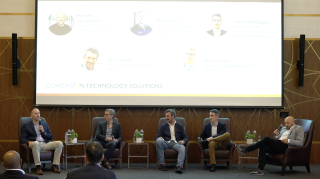VOD monetization: New territory for local advertisers
December 3, 2018
Are you watching more video-on-demand (VOD) programming? Of course you are. We’re living in a binge-watching economy where entire seasons of a program are delivered all at once and VOD consumption is a growing component of the average viewer’s video diet. The market opportunity for advertisers is nothing less than explosive: according to a 2018 report by the Video Advertising Bureau (VAB), ad impressions for VOD have experienced a dramatic increase from 6.3 billion in 2014 to 23.3 billion last year. So how do you capitalize on this 4x growth?
Disparate timeframes vs. time-sensitive ads
For businesses and agencies at the local and regional levels, VOD advertising can be a tough nut to crack, primarily because of the convoluted process of placing and managing VOD ad spots. It can take anywhere from 24 to 72 hours to make spots available for play through multichannel video programming distributors (MVPDs). A 24-hour turnaround would already be too long for VOD to be viable for short-term promotions or late-breaking opportunities. If it takes even longer, it means that the viability of a campaign with a very short shelf life would be inconsistent across destinations. There are a lot of reasons why VOD processes (and timeframes) are all over the map:
- Dynamic Ad Insertion (DAI) for set-top-box (STB) VOD requires additional metadata in a specific format (CableLabs 1.1) in order to work properly with the intended program. The metadata requirement lies on the MVPD side, but content providers need the software and people to write it. Many commercial spots are delivered either without it, or with metadata that’s written in an incompatible format.
- DAI for digital destinations requires a variety of media formats. Content providers need the correct software to solve for these destinations, as well as video experts who can ensure that all transcoding / transformation is performed properly. The post-transcoding playback experience must be at its best, prior to being subject to any of the other factors (such as geography and network traffic) that may impact the consumer’s playback.
- Every MVPD also has to account for its internal own delivery mechanism – or multiple mechanisms. They may outsource their work, maintain their own technology stack, or both. Larger distributors may have additional traffic coming from internal clients, such as advertising for news, sports, or other programs that the MVPD offers.
Adding to the overall complexity of VOD ad delivery is volume: to say there are a lot of ads to process would be a gross understatement. For national spots alone, just one major provider is moving hundreds of thousands of spots annually; and when it comes to VOD delivery, spots are still being relegated to a manual queue, mainly due to the challenges above.
Everything adds up to non-linear inventory that’s a real challenge to monetize effectively, especially during critical Nielsen C3/D4 periods that impact the value of advertising. Local ads or short term, time-bound promotions aren’t a good match for VOD playback unless they can be swapped out in near real-time once they’re no longer viable.
Expanding VOD monetization with the cloud
With a centrally-managed ad library and management architecture that resides in the cloud, the disparate VOD workflows across delivery endpoints are brought together into one consistent, simplified, and accelerated process. This is huge news for both sides of VOD monetization: not only does it open up new revenue opportunities for ad purveyors, but it also improves business for content providers on the buy-side of the equation looking for more ways to sell ad space. The centralized location within the overall ad delivery pathway is key, providing both advertiser/agency and content provider/broadcaster with visibility and ease- of-use. Where the previous workflow takes up to 3 days to complete, the new process can be completed in hours.
-Ads and promos are now aggregated into one common location.
-Digital/ad operations teams can locate assets (both external ads and internal promotional spots) via web-based UI.
-Assets can be viewed, rules applied, and distribution initiated to preset destinations.
-Information needed for ad decisioning services (ADS) is immediately generated.
-Ops teams can copy and paste the information into ADS, and associate the creative assets with the correct campaign immediately.
The across-the-board benefits translate into more than just better performance. They imbue the entire operation with the needed agility to respond to changes in short order, and make last-minute revenue opportunities possible.




